Advanced LR Photo Editing: Mastering Local Adjustments, Color Grading & AI Tools

Advanced LR Photo Editing: Mastering Local Adjustments, Color Grading & AI Tools

Once you’ve grasped the fundamentals of Lightroom—presets, batch editing, and basic color correction—it’s time to level up. The real magic in Adobe Lightroom photo editing comes when you move beyond global adjustments and start sculpting light and color with precision.
This article is your next step. It’s designed for photographers who already know how to navigate the interface and apply presets but want to refine their edits to a professional, signature level. We’ll explore advanced techniques like color grading, targeted local adjustments, sharpening, noise control, and AI-powered enhancements. These tools transform good images into compelling, portfolio-worthy Lightroom pictures—consistently and efficiently.
Whether you’re perfecting a portrait, adding drama to a landscape, or polishing a high-ISO indoor event shot, mastering these advanced Lightroom features turns Adobe Lightroom photo editing software into a creative playground with precision and control.
Advanced Exposure, Contrast, and Color Correction
The foundation of every strong edit remains the same: perfect exposure, contrast, and white balance. But advanced Lightroom users go a step further, learning how to fine-tune tone and color with greater subtlety—especially when working with challenging lighting or high-dynamic-range scenes.
Precision Exposure Adjustments
In the Basic panel of Lightroom, the Exposure slider is just the beginning. To get the most from your file, especially when you edit RAW in Lightroom, you’ll want to pay close attention to these tools:
- Highlights and Shadows: Recover blown-out skies or lost shadow detail. For instance, lift Shadows in a backlit portrait or bring down Highlights in a bridal gown without losing the lace texture.
- Whites and Blacks: Set the endpoints of your histogram to ensure full tonal range. Hold down Alt (Windows) or Option (Mac) while dragging to view clipping. Avoid crushed blacks or blown whites unless it’s an intentional style.
- Contrast & Texture: Combine global contrast with the Clarity and Texture sliders for midtone punch or subtle skin detail enhancements.
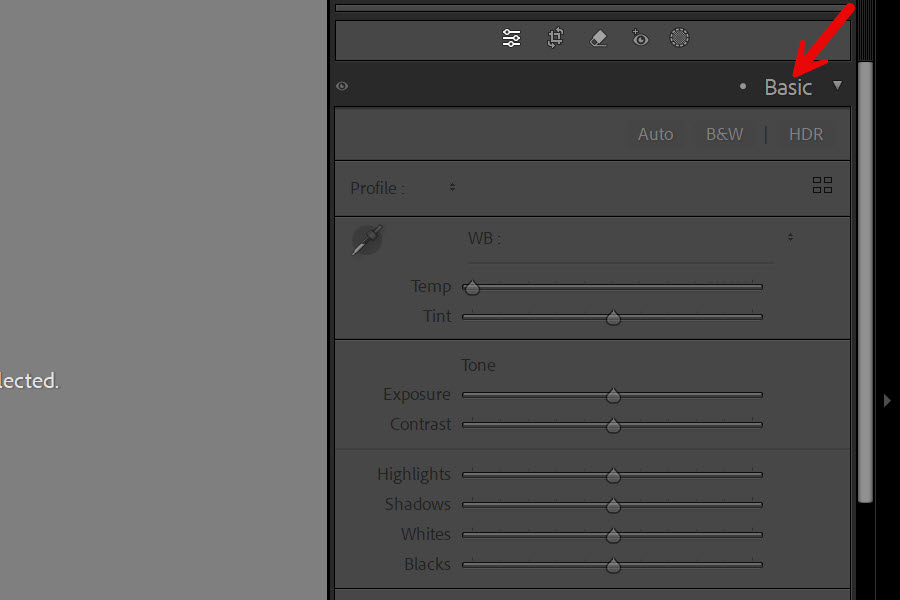
These tools come to life when you edit RAW photos in Lightroom because RAW files retain more detail in the highlights and shadows, giving you more room to recover or push tones creatively.
Advanced White Balance and Tint
Go beyond the auto White Balance tool by manually balancing cool shadows with warm skin tones—especially in mixed-lighting environments.
Use the Temperature and Tint sliders to fine-tune mood—cooler tones for clean business portraits, warmer tones for romantic or lifestyle edits. Professional editors often use small color temperature shifts to create emotional impact while maintaining natural-looking skin. For wedding and portrait photographers, this is a signature-defining step.
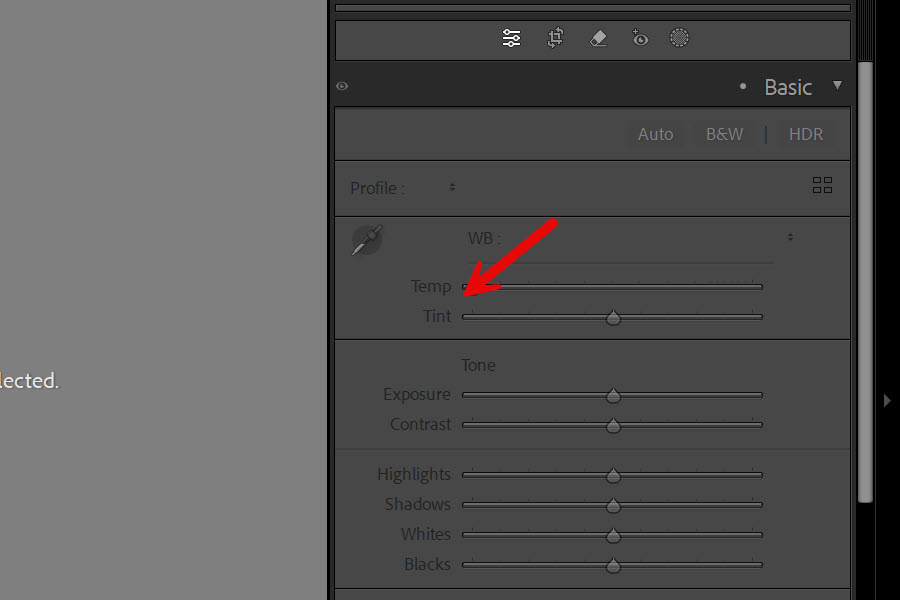
Mastering the HSL Panel and Color Grading Tools
When it comes to developing a consistent and professional style in your Lightroom photo editing, color control is everything. This is where Lightroom’s HSL (Hue, Saturation, Luminance) panel and Color Grading tools shine. These advanced features allow you to shape mood, create consistency, and emphasize your visual identity—down to the finest color detail.
Fine-Tuning with the HSL Panel
The HSL panel is your surgical toolkit for adjusting individual colors. Each color channel—Red, Orange, Yellow, Green, Aqua, Blue, Purple, and Magenta—can be manipulated in three key ways:
- Hue: Shift the tone of a color (e.g., make oranges more red or yellow).
- Saturation: Adjust the intensity of a specific color without affecting the entire image.
- Luminance: Brighten or darken that specific color range.
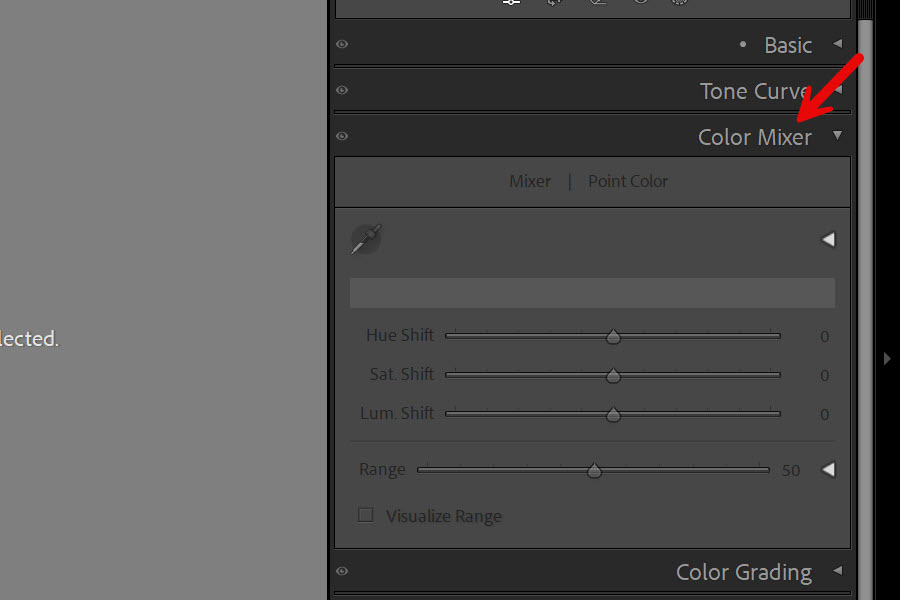
There are several practical use cases where targeted color adjustments can make a big difference. In portrait photography, slightly shifting the orange hues can warm up skin tones, while reducing orange saturation helps tone down overly red complexions. For event photos, correcting greenish color casts caused by fluorescent lighting can be achieved by fine-tuning the green or yellow channels. And when editing landscapes or sports images, enhancing blue skies or team uniforms by adjusting the blue and aqua channels can add vibrancy and visual impact.
This level of control is what separates a basic edit from a refined, print-ready image. In Lightroom photo editing, small color decisions make a huge visual impact.
Using the Color Grading Panel
Lightroom’s Color Grading feature (formerly Split Toning) allows you to apply separate color tints to the shadows, midtones, and highlights of your image—plus a global tint if desired. Each can be adjusted in hue, saturation, and balance.
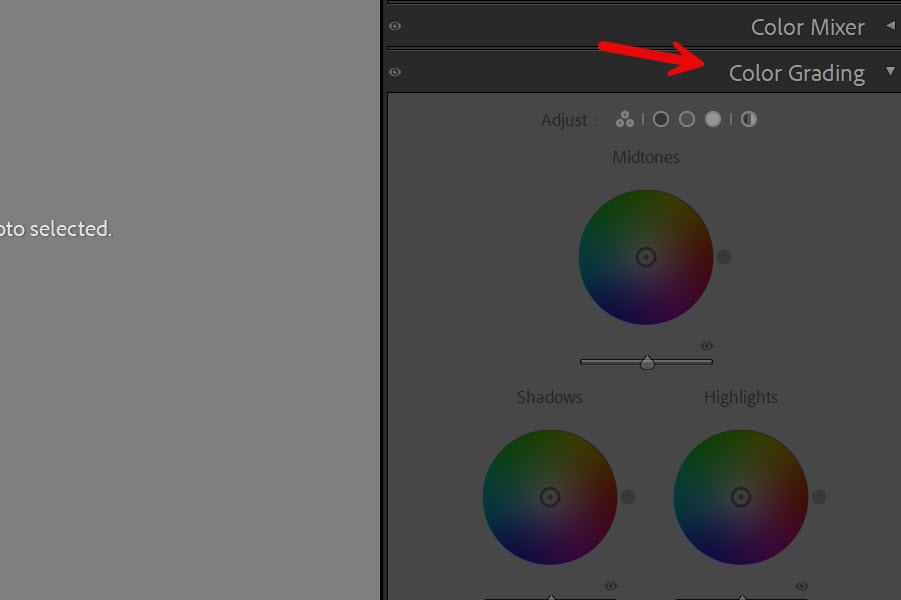
This tool is essential for giving your images a stylized, cinematic, or moody atmosphere. In wedding and baby photography, a warm golden tint in the highlights combined with soft pink or peach tones in the midtones can create a romantic, dreamy feel.
For sports or urban portraits, adding cooler tones like blue or teal to the shadows while warming up the highlights helps build contrast and drama. And in more artistic projects, you can take color grading even further—experimenting with vintage tones, matte finishes, or film-inspired looks to give your work a unique visual identity.
The balance slider lets you determine whether your tinting leans more toward shadows or highlights, giving you full control over how the tones interact.
For best results, always compare your color edits to a reference image or the unedited version by tapping the backslash key (\)—this helps you stay grounded and avoid overediting. Subtlety is key: color grading should support the story you’re telling, not draw attention away from it. For maximum creative control, combine HSL adjustments with Color Grading to fine-tune both tonal balance and emotional impact. Once you become confident with these tools, your Lightroom edits will reflect a consistent, recognizable style that sets your work apart—and that clients will instantly recognize.
Local Adjustments: Brush, Graduated, and Radial Filters
Global adjustments improve the overall image—but local adjustments are where your Lightroom editing sessions become truly custom and professional. They allow you to fine-tune specific parts of your image, drawing the viewer’s attention exactly where you want it.
Lightroom offers a robust suite of local tools: the Adjustment Brush, Graduated Filter, Radial Filter, and now, AI-powered masks like Select Subject and Select Sky.
The Adjustment Brush: Precision at Your Fingertips
The Adjustment Brush lets you “paint” exposure, contrast, clarity, temperature, and more onto targeted areas of your photo.
Local adjustments can be incredibly useful in a variety of situations. For example, you can lighten the faces of a couple in a backlit wedding photo to bring out their expressions and details.
In newborn portraits, reducing clarity and increasing noise reduction helps soften the skin for a gentle, delicate look. And in corporate headshots, you can subtly brighten a speaker’s face without affecting the background—perfect for creating a clean, professional impression.
You can control the brush size, feathering, flow, and even use auto-mask to limit adjustments to edges.
For high-quality Lightroom editing sessions, this tool is indispensable for detailed refinement.
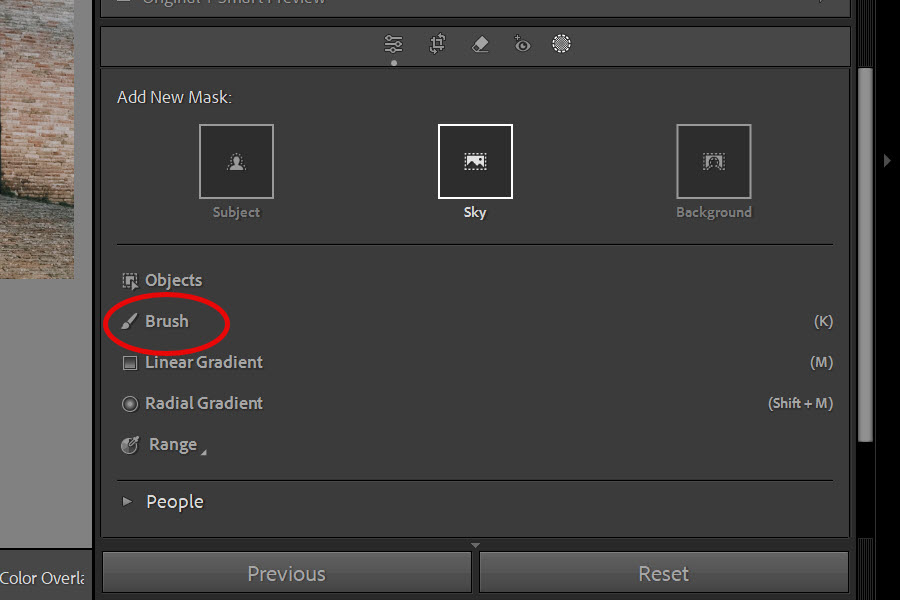

Linear and Radial Gradients: Subtle Yet Powerful
Both tools can be stacked and used together, giving you compositional control over light and color. Combined with your global adjustments, these tools help refine your Lightroom edits to a polished, professional level.
The Linear Gradient in Lightroom is ideal for balancing exposure in scenes with uneven lighting. It’s especially helpful for darkening a bright sky in an outdoor ceremony shot without affecting the rest of the image, or for reducing distracting window glare in indoor portraits—subtly guiding the viewer’s eye toward the subject.
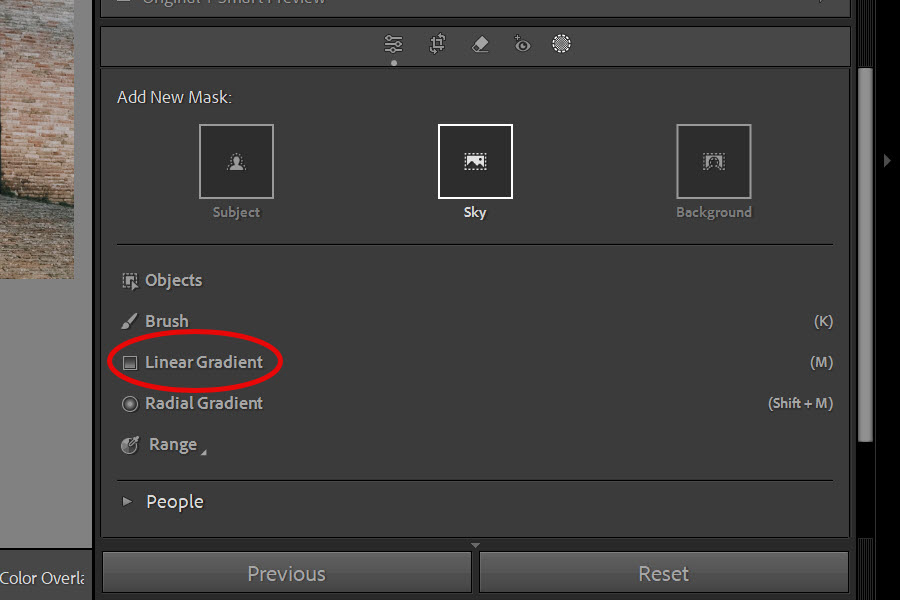

The Radial Gradient, on the other hand, is great for creating soft vignettes or gently emphasizing a focal point. You can darken the area outside the radial selection to draw attention inward, or lighten the subject within the circle to make it stand out more.
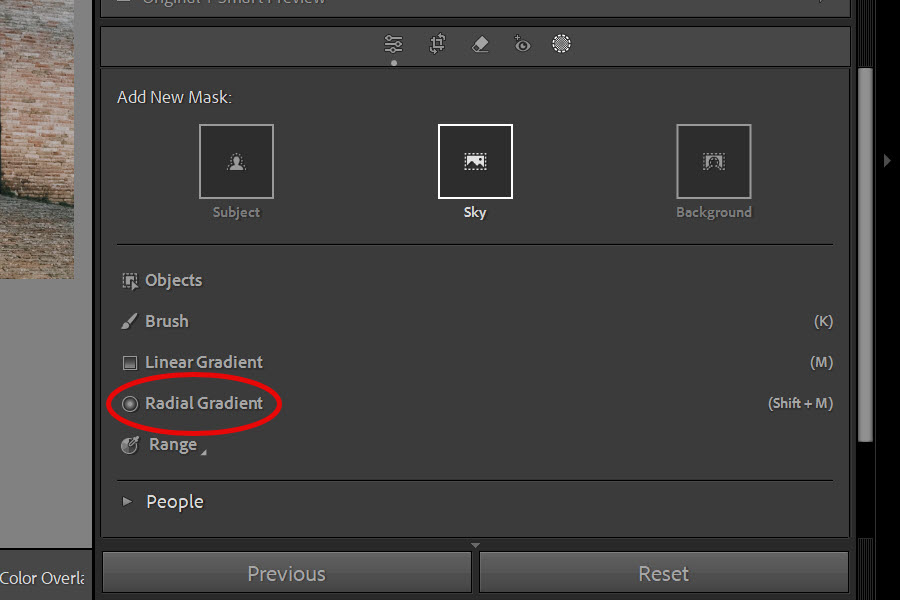
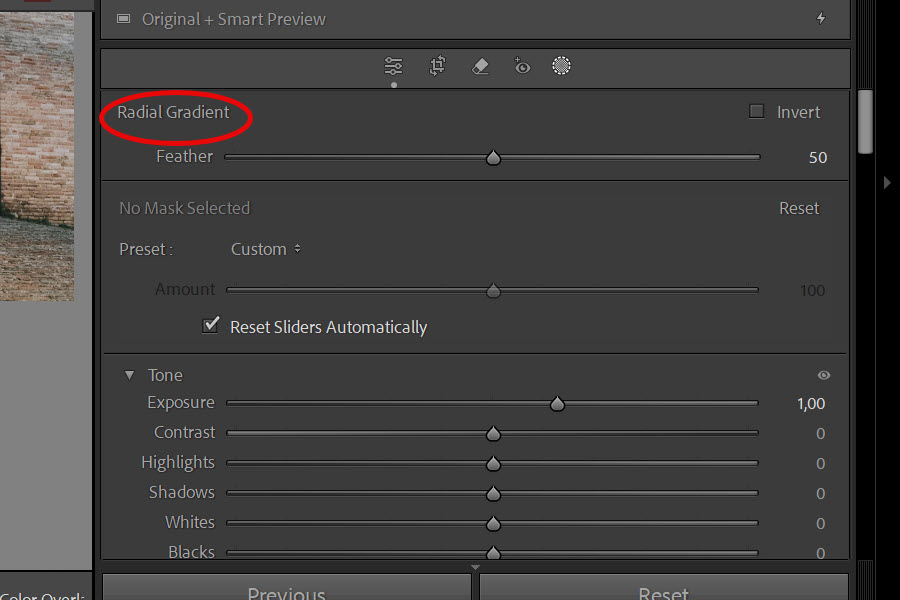
A useful tip: by inverting the Radial Gradient, you can apply adjustments specifically inside the selected area—perfect for spotlighting faces, adding clarity to key details, or enhancing subtle light accents around your subject. These tools, when used thoughtfully, can bring a natural yet powerful sense of focus and depth to your images.
AI-Powered Masks: Next-Level Speed and Precision
Recent versions of Lightroom have introduced powerful AI masking tools that automatically detect and select specific parts of your image—dramatically reducing the time needed for complex selections.
Available options include Select Subject, which automatically highlights the main subject (such as a person or object), and Select Sky, which identifies and masks the sky—perfect for landscape and outdoor event shots. More refined tools like Select Background allow for even more precision, enabling you to isolate subjects or individual features such as skin, hair, or clothing.
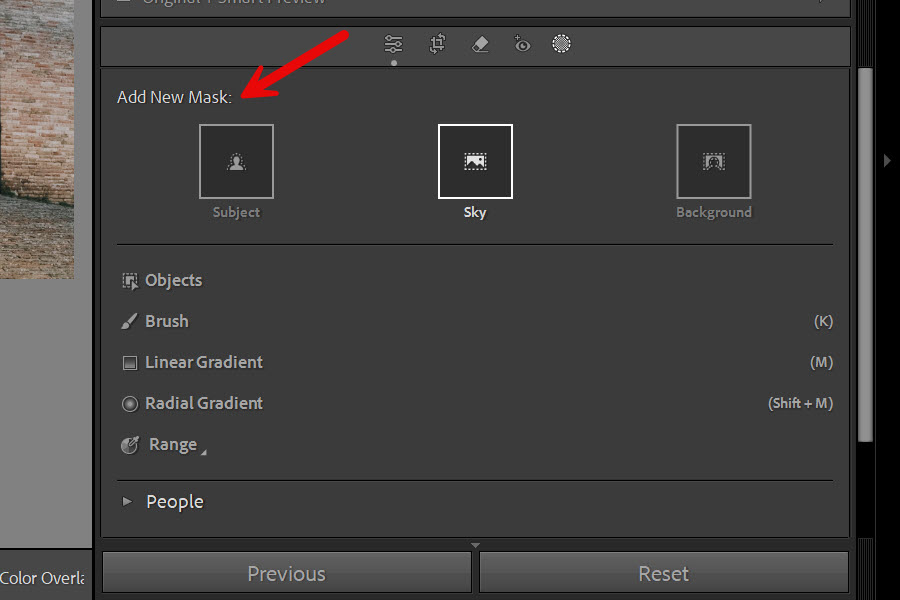
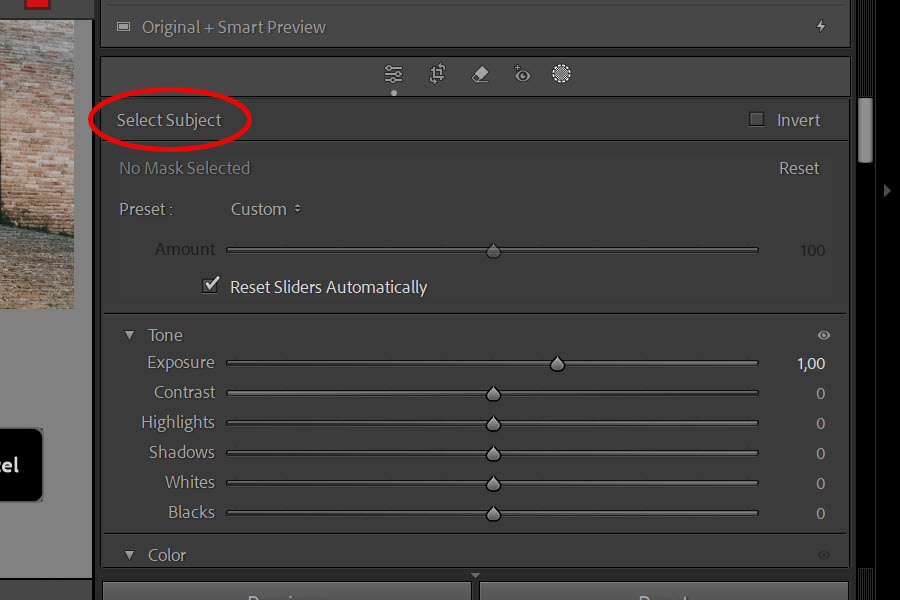
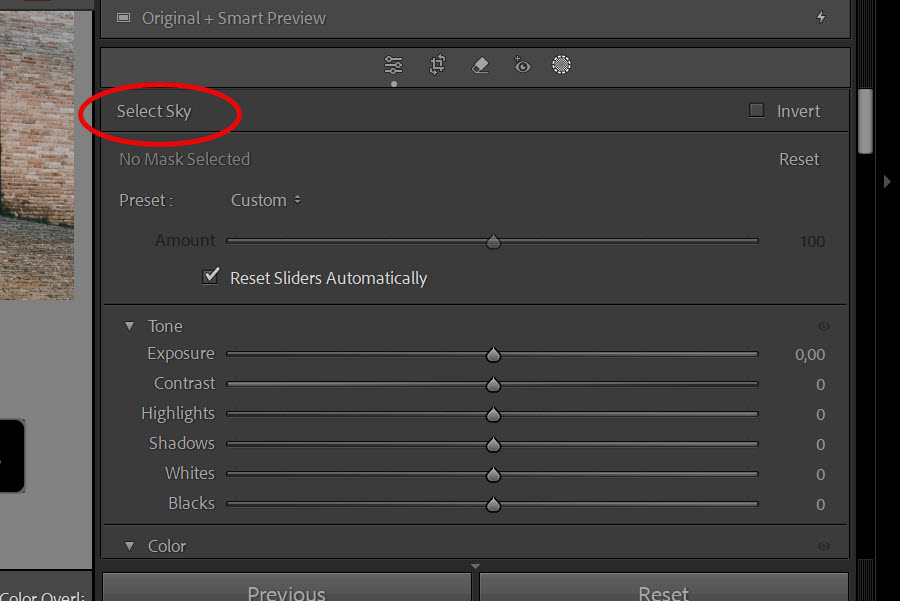
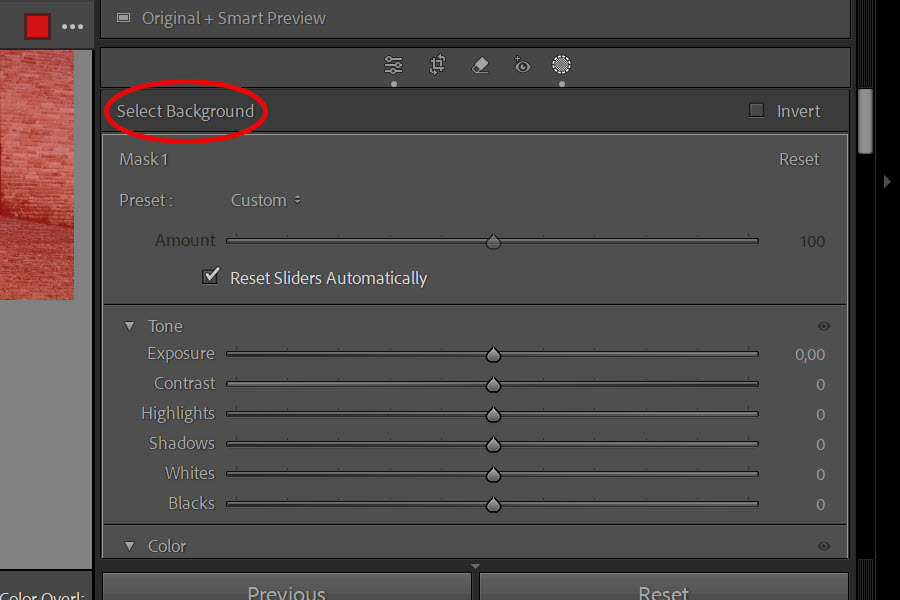
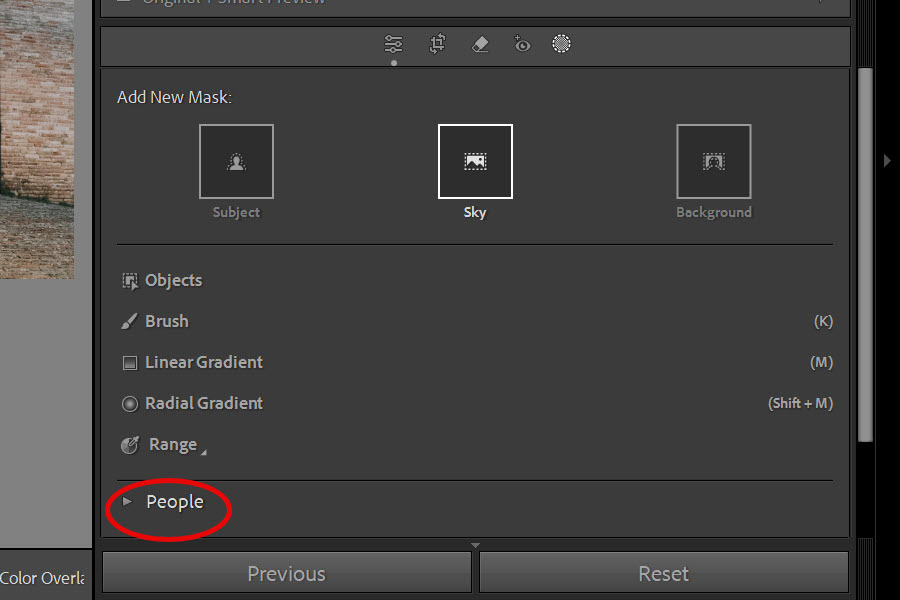
In real-world scenarios, these tools offer incredible efficiency: brighten only the bride’s dress or the groom’s face with one click using Select Subject; darken the sky in a sunset scene to boost contrast without affecting the couple below; or smooth skin and enhance eyes in portraits by targeting specific facial features.
You can still fine-tune any AI mask using manual brushes or other selection tools, adding or subtracting as needed. This combination of intelligent automation and precise control makes AI masking one of the most powerful features in modern Lightroom editing.
Noise Reduction and Sharpening Techniques
Even the most well-composed and beautifully lit photos can suffer from digital noise or softness—especially when shooting in low light or at high ISO settings. That’s why understanding the balance between noise reduction and sharpening is crucial to high-quality Lightroom photo editing.
In Lightroom, these two processes work hand in hand: noise reduction smooths grain and artifacts, while sharpening restores crispness and detail. Done correctly, they enhance your image without degrading its natural texture.
Luminance vs. Color Noise Reduction
You’ll find the noise reduction sliders in the Detail panel:
- Luminance: Reduces the grainy texture caused by high ISO. Increasing this slider smooths noise but can also soften details. Use the Detail and Contrast sub-sliders to regain some structure and preserve edges.
- Color: Targets color speckles—those tiny red, green, or blue artifacts often seen in shadows. Lightroom typically applies a default of 25, which works well in most situations. You can increase it slightly if needed, but avoid going too high, as this can desaturate fine color detail.
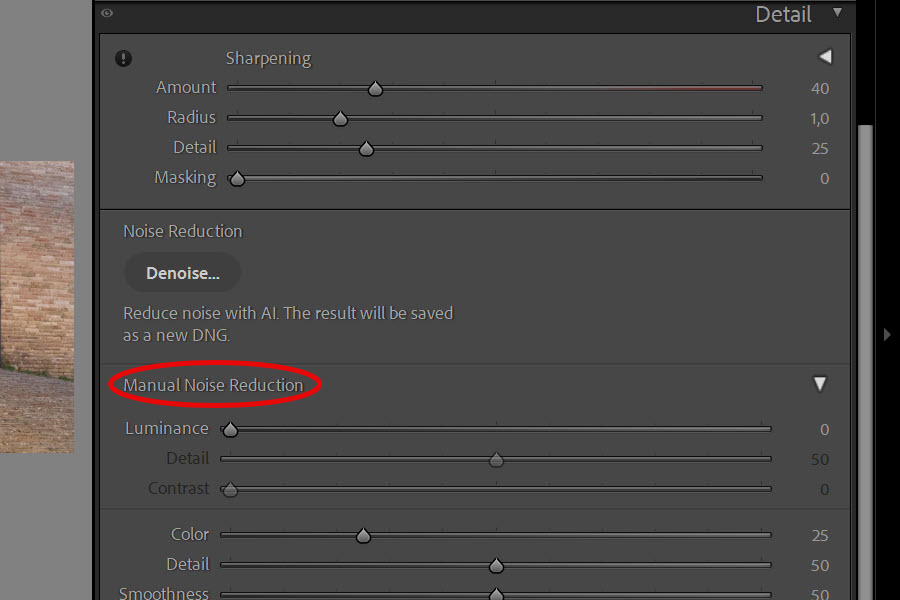
Pro Tip: Always zoom to 100% when applying noise reduction.
The goal is to reduce visual distractions while keeping the image sharp and natural—particularly important in Lightroom photo work like portraits, weddings, or low-light event coverage.
Sharpening with Control
The Sharpening section in the Detail panel includes:
- Amount: Controls overall sharpening intensity.
- Radius: Determines how wide the sharpening effect spreads from edges. A low setting (around 0.8–1.0) is usually best for most cameras and portraits.
- Detail: Dictates how much fine texture is enhanced. Use lower values for smooth skin, higher for detailed textures like landscapes.
- Masking: This is a must-use slider. Hold down Alt/Option while dragging to see a black-and-white mask. White areas will be sharpened; black areas will be protected. Use this to sharpen only key edges (like eyes or clothing texture) while avoiding smooth surfaces like skin or skies.
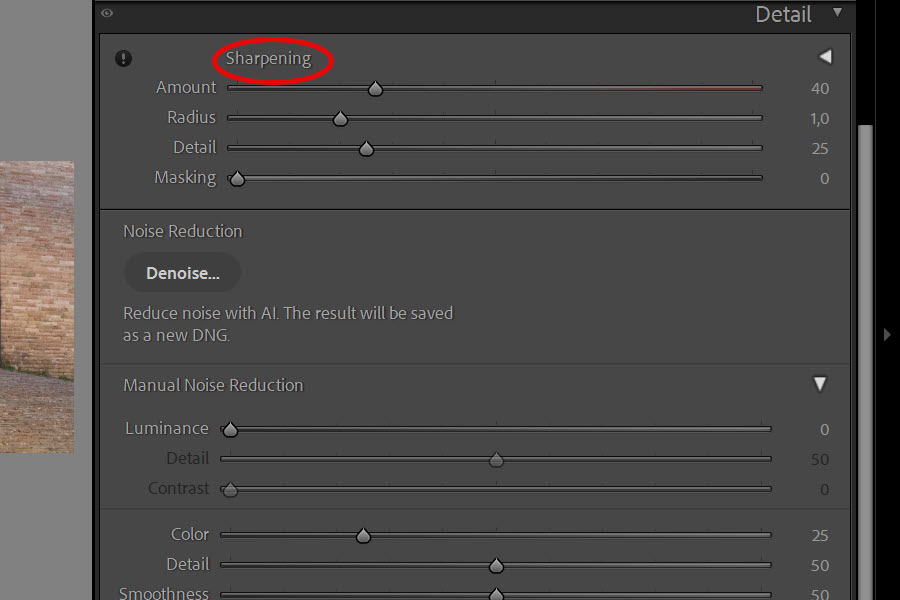
This level of precision helps you avoid the dreaded over-sharpened look and instead achieve a clean, professional finish.
AI Denoise: Lightroom’s Newest Secret Weapon
Lightroom’s AI-powered Denoise tool, available for RAW files, uses machine learning to dramatically reduce noise while preserving fine detail. When applied, it creates a new DNG version of your image that has been processed using advanced noise reduction algorithms.
his tool is especially useful for high ISO images—typically ISO 6400 and above—such as indoor sports shots or dimly lit wedding receptions. It also performs well when traditional noise reduction methods make images appear too soft or washed out.
For batch-processed RAW files, AI Denoise offers an effective way to clean up noise before applying sharpening. It can be a true game-changer in your Lightroom workflow, particularly under challenging lighting conditions.
Just keep in mind that it’s resource-intensive, so if you’re processing a large batch, it’s worth planning ahead.
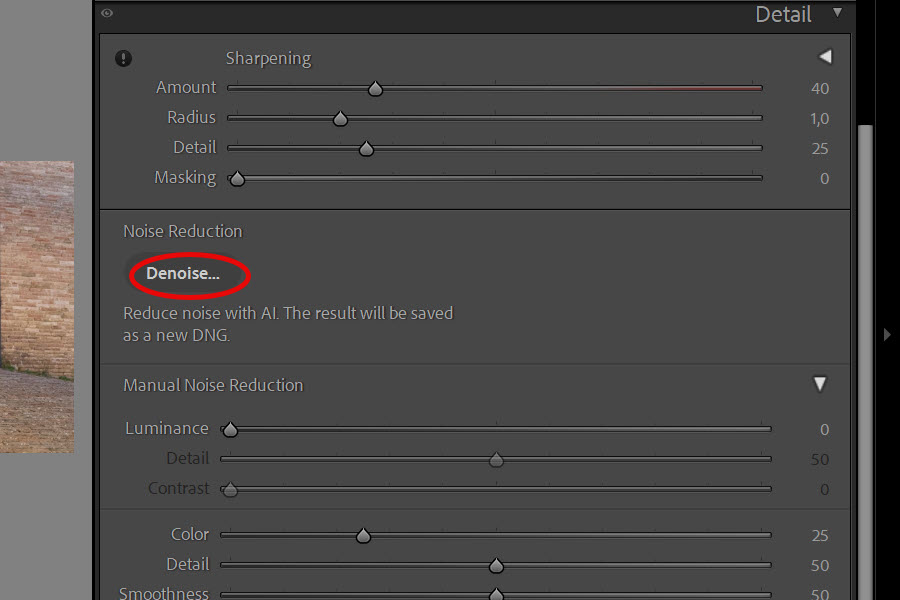

Incorporating AI Tools: Spotlight on Neurapix
As Lightroom continues to evolve, AI-powered tools are reshaping how professionals edit. Adobe has already introduced intelligent features like AI Denoise and automatic masking, but third-party innovations like Neurapix are taking Adobe Lightroom photo editing software to the next level—especially when speed and consistency are key.
What Is Neurapix?
Neurapix is an AI-powered Lightroom Classic plugin that learns your personal editing style by analyzing a set of your fully edited photos. Once trained, it can apply that style to new image sets with speeds of up to 1,000 photos per minute. The result is a SmartPreset that mimics your editing choices, giving you a tailored base look across entire galleries.
How It Works in Practice
To get started with Neurapix, simply upload a selection of your already edited photos—this allows the system to learn your unique aesthetic and create a personalized SmartPreset. Using the Neurapix plugin, you can then apply this custom preset directly to new images within Lightroom. After that, you remain fully in control: review and fine-tune individual images as needed while Neurapix takes care of the time-consuming bulk work.
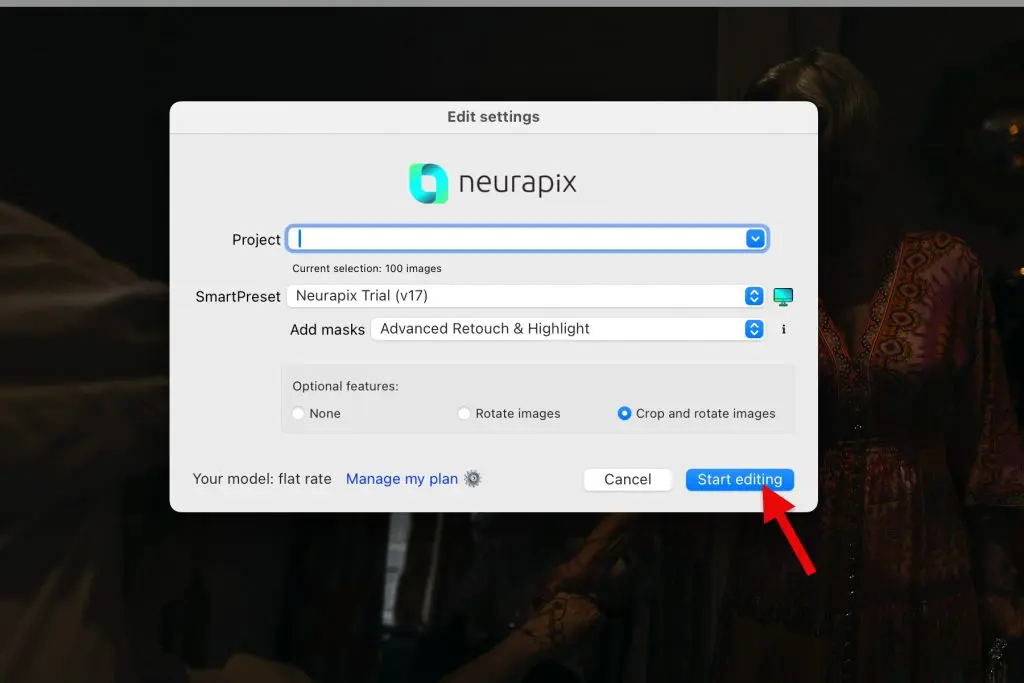
This approach is especially valuable for high-volume workflows like weddings, school portraits, or event photography. For instance, a wedding photographer can apply consistent exposure, color grading, and contrast across an entire gallery in just minutes. A sports photographer can batch-process hundreds of team photos with unified tonal adjustments. And a kindergarten photographer can quickly apply a clean, cheerful style across dozens or even hundreds of student portraits—saving hours in the editing process.
AI as Assistant, Not Replacement
The key to integrating tools like Neurapix is to treat AI as a smart assistant—not a replacement for your creative decisions. You remain the final editor, applying local adjustments, cropping, and stylized tweaks to perfect the gallery. Instead of dragging sliders 1,000 times, you start from a polished baseline that reflects your visual identity.
This approach also applies to Adobe’s own tools—like AI masks, adaptive presets, and Auto Settings—all of which can intelligently handle the repetitive parts of editing while leaving room for your expertise.
Conclusion
Mastering advanced Lightroom techniques is about more than learning buttons and sliders—it’s about gaining control over light, tone, and emotion in your images. When you refine your use of local adjustments, dive deep into color grading, apply intelligent sharpening and noise control, and embrace AI tools like Neurapix, your Adobe Lightroom photo workflow becomes faster, more consistent, and more aligned with your artistic goals.
Let’s recap the advanced tools we’ve explored. Start by using precise exposure and tone adjustments to recover lost highlights, lift shadows, and fine-tune detail—especially when working with RAW files. The HSL panel and Color Grading give you powerful control over mood and color, helping you shape a consistent, signature look. Local adjustments allow you to selectively refine specific areas, drawing attention to your subject and enhancing overall visual harmony.
Apply noise reduction and sharpening carefully to maintain clarity without introducing unwanted artifacts. And finally, make use of AI tools like Adobe’s AI Denoise and the Neurapix plugin to significantly speed up your workflow—without sacrificing quality or creative control.
By mastering these techniques, your edits will not only look more polished but also feel more intentional.
Related Posts

Streamlining Your Lightroom Workflow: Efficient Techniques for Consistent Results
Photographers today face an ever-growing volume of images to manage—whether it’s a full-day wedding, a…
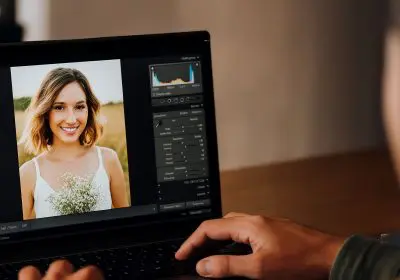
Mastering Adobe Lightroom Photo Editing: Essential Tips & Techniques
Capturing a great photo is only half the battle—what truly elevates an image is how…
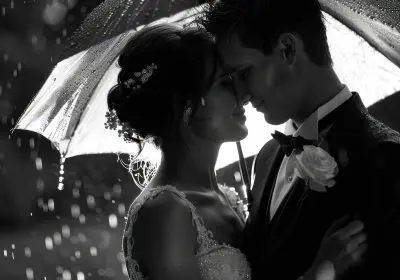
Mastering Photography in Challenging Weather and Lighting Conditions
Capturing stunning photographs isn’t always about perfect weather or ideal lighting. In reality, professional photographers…
